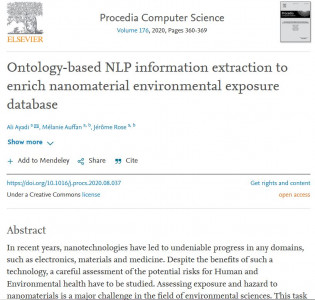Article on "Release and fate of nanoparticulate TiO2 UV filters from sunscreen: Effects of particle coating and formulation type" by Slomberg, D. L., Catalano, R., Bartolomei, V., & Labille, J. (2020).
Abstract:
Nanoparticulate mineral UV filters, such as titanium dioxide (TiO2) nanocomposites, are being increasingly used in sunscreens as an alternative to organic UV filters. However, there is still a lack of understanding regarding their fate and behavior in aquatic environments and potential environmental impacts after being released from a bather’s skin during recreational activities. In this work, we assessed the release, fate, and transformation of two commercial nanocomposite TiO2 UV filters, one hydrophobic and one hydrophilic, in ultrapure water and simulated fresh- and seawater. The hydrophobic TiO2 nanocomposite, T-SA, was coated with a primary Al2O3 photopassivation layer and a secondary stearic acid layer, while the hydrophilic TiO2 nanocomposite, T-SiO2, was coated with a single SiO2 photopassivation layer. The influence of the sunscreen formulation was examined by dispersing the TiO2 nanocomposites in their typical continuous phase (i.e., oil for T-SA and water for T-SiO2) before introduction into the aqueous system. After 48 h of aqueous aging and 48 h of settling, 88–99% of the hydrophobic T-SA remained floating on top of the water column in all aqueous systems. On the other hand, 100% of the hydrophilic T-SiO2 settled out of the water column in the fresh- and seawaters. With respect to the photopassivation coatings, no loss of the T-SA Al2O3 layer was detected after aqueous aging, but 99–100% dissolution of the SiO2 layer on the T-SiO2 nanocomposite was observed after 48 h in the fresh- and seawaters. This dissolution left behind T-SiO2 by-products exhibiting a photocatalytic activity similar to that of bare rutile TiO2. Overall, the results demonstrated that the TiO2 surface coating and sunscreen formulation type drive environmental behavior and fate and that loss of the passivation layer can result in potentially harmful, photoactive by-products. These insights will help guide regulations and assist manufacturers in developing more environmentally safe sunscreens.









